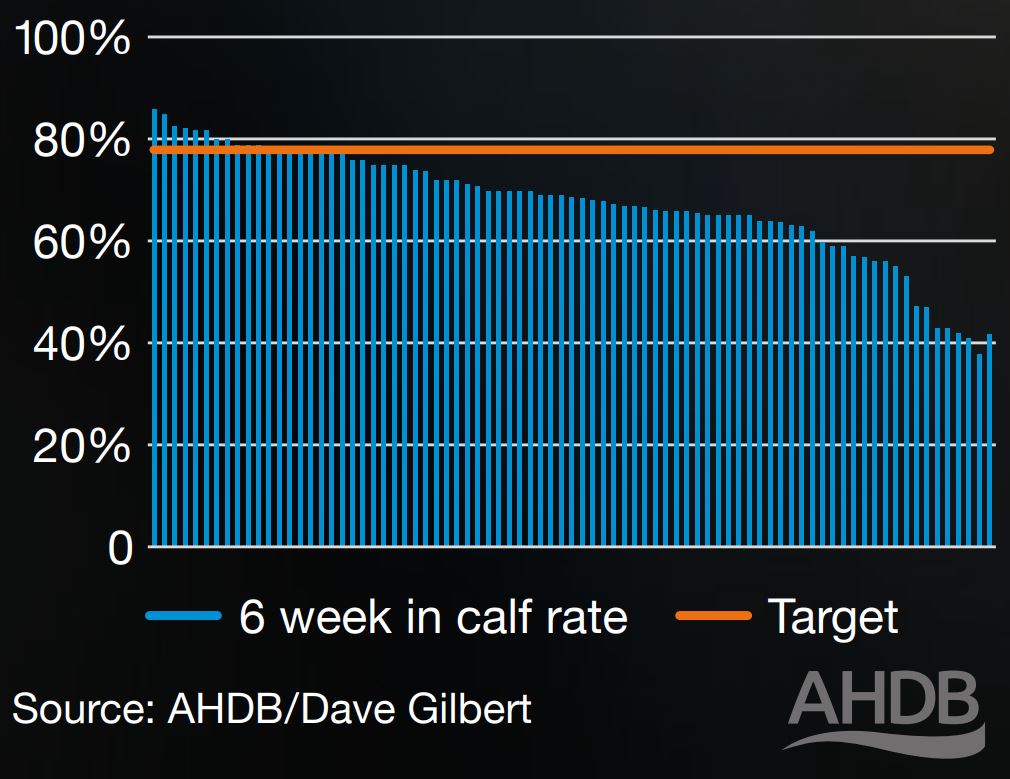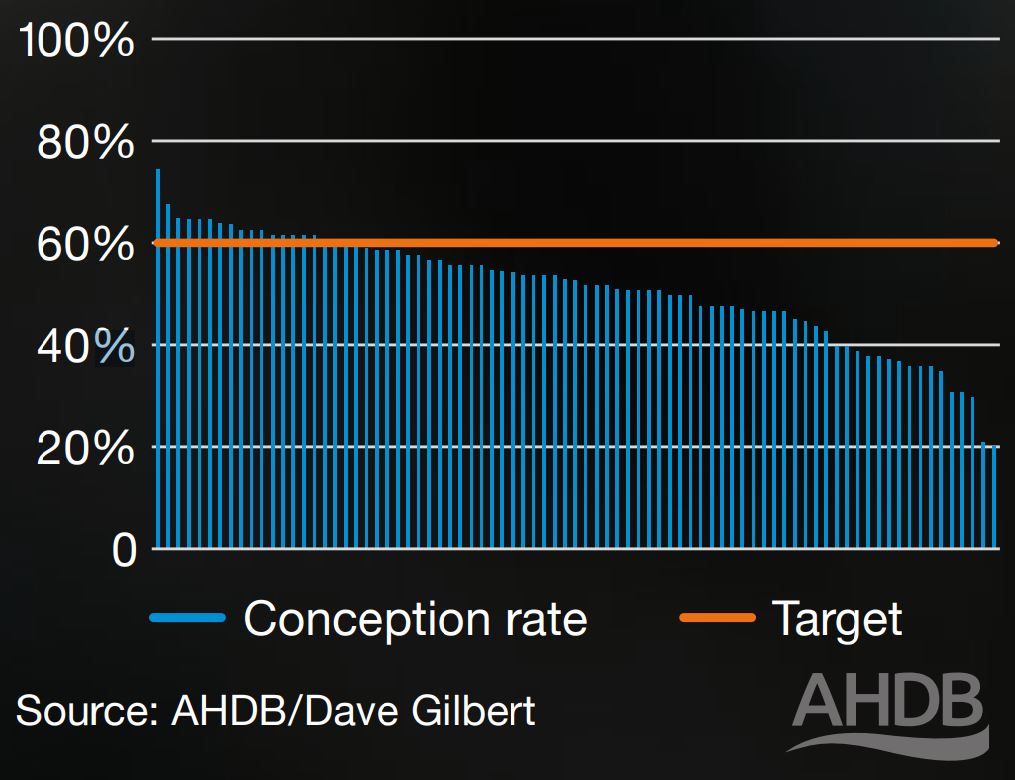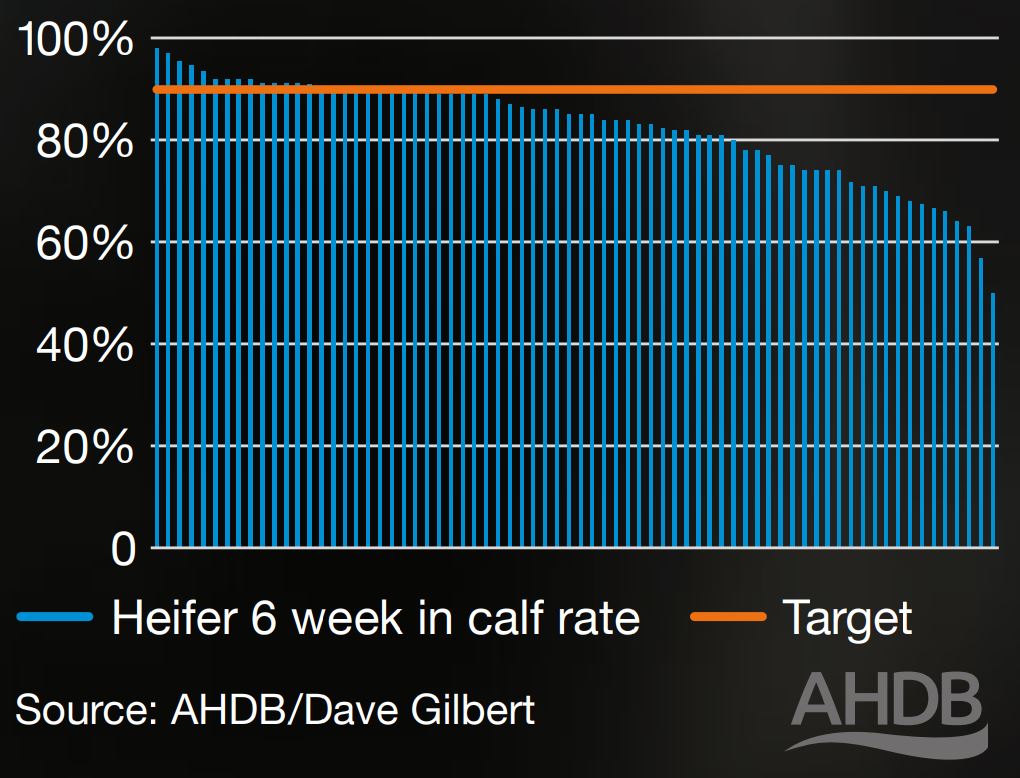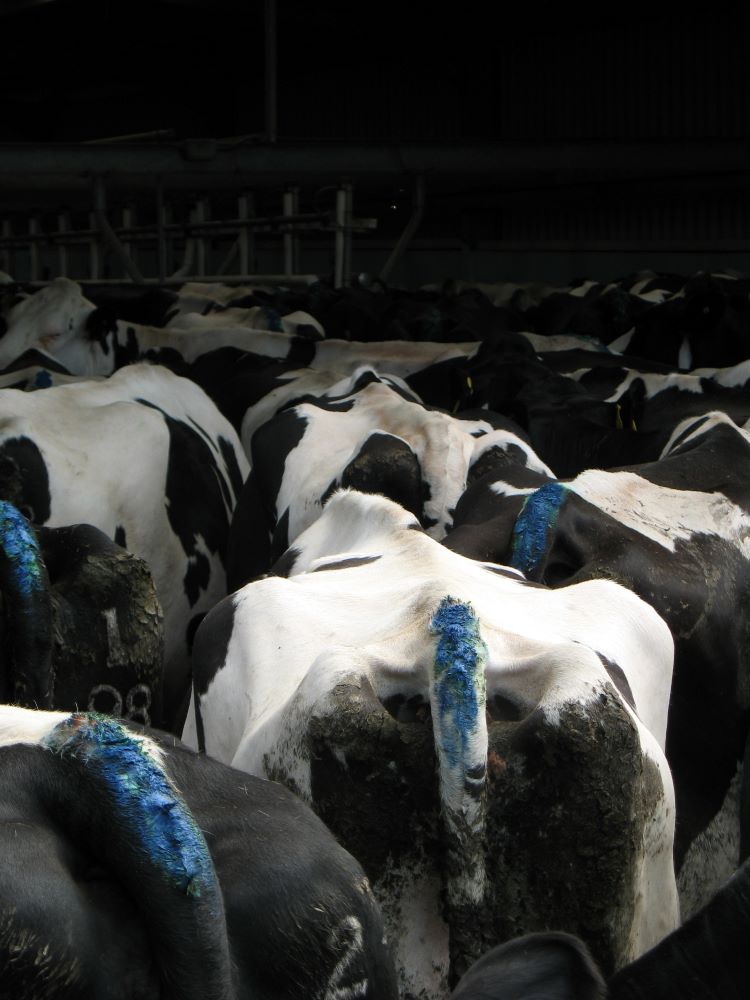Improving fertility in block-calving herds
Tuesday, 7 February 2023
Block-calving herds are known for their good fertility. However, data shows many are failing to meet Key Performance Indicators (KPIs), so they aren’t as efficient as they assume, explains AHDB Knowledge Exchange Manager Shirley Macmillan.
Managing block calving herds needs a clear focus on getting cows back in-calf because farmers know that the tighter the block, the longer the recovery time cows have post-calving. Herds get more days in milk, heifer replacements are closer in age groups, and there is less human fatigue at the tail end of calving.
Yet a snapshot of the block-calving businesses taking part in our fertility workshops show that only 25% of them are achieving key fertility targets. Three major areas for improvement are six-week in-calf rate, conception rate, and heifer fertility, according to vet Dave Gilbert of Horizon Dairy Vets in Shropshire, who analysed the figures supplied by 100 herds (50:50 split between spring and autumn calving).
Not only are these businesses missing out on farm profit but Dave points out they also risk the efficiency and lifestyle benefits that are the reason behind calving all cows in 12 weeks: "Research by Teagasc in Ireland calculated there is a saving of £5–6/cow for every 1% improvement in the six-week in-calf rate so, for instance, a 300-cow herd that improves by 5% could gain £7,500 for that business," he explains. "If a spring block starts to slip, it means cows are in-milk later in the year, requiring more supplementary feed at a higher cost. Lifestyle and workload are also important when there are challenges in recruiting and retaining staff."
He believes many farmers will be unaware of the actual performance of their herd because they don’t collect and review annual performance data consistently, nor understand how to calculate KPIs. "You can’t improve if you don’t know what you’re doing wrong, it will be just a random guess," he says, adding that software packages now make data analysis quick and easy.
In the AHDB data set, Dave reports fewer than 25% of herds were achieving the six-week target of 78% (Figure 1). "The six-week calved rate is the KPI that ultimately drives business because cows need to be calved and milked. We use the six-week in-calf rate to make management changes before the start of breeding so we are in time to have an effect."

Figure 1. Six-week in-calf rate
To increase the proportion of cows that are back in-calf by six weeks, he says it’s important they have enough recovery time after calving. Other influences include nutrition, body condition score and infectious disease. Practical aspects such as heat detection accuracy, AI technique and semen management all contribute to how many cows are identified, served, then conceive.
While submission rates in these herds were good in the first cycle, Dave found that conception rates were only 51% instead of a target of 60% (Figure 2). This is where a slapdash approach to inseminating cows won’t help. It’s not just about putting semen in the right place, he says, but also how you manage the product. Has it been stored and thawed correctly? How is it handled between flask and cow?

Figure 2. Conception rate
"I’ve seen farms where the flask and handling race are 200 metres apart and people are walking back and forth to AI cows. The temptation then is to thaw multiple straws at once. We also need to consider the stress on cows of drafting them at morning milking and holding them without food or water until they are inseminated."
Of biggest concern is that 75% of the herds with first lactation heifer data are failing to achieve a six-week in-calf rate of 90% (Figure 3). "Heifers are your future, and they haven’t repaid their rearing costs until at least their second lactation," he points out. "People know heifers are their most valuable asset, but don’t plan to make sure they are on track. How many farms routinely weigh replacements? Too often growth is judged by eye and the focus is on health or minerals. Problems then happen when block-calving herds serve heifers based on a timeline, rather than a target weight."

Figure 3. Heifer six-week in-calf rate
Dave’s key message is to review fertility performance six months before mating starts. This gives enough time to alter management – such as changing body condition – to have a real impact. And he thinks it’s essential to involve the whole farm team: "Have a meeting, which includes staff and the wider team (vet, nutritionist, consultant), to work out where you did well and not so well. Get their ideas of what to do differently next time and put together an action plan."
He cautions, however, that fertility progress is slow, taking 3–5 years, and involving front-end loading the block with heifers, while slowly clawing the tail-end cows forward, eventually culling animals at the back. "Block calvers may be good at fertility, but farmers shouldn’t be complacent. You need to keep doing this every year to keep on top of a calving block because there are always subtle changes in the team, what you feed and the weather. Even a successful block calving herd needs tweaking."
For more information, download the InCalf guide for GB farmers with block calving herds

Sectors:

